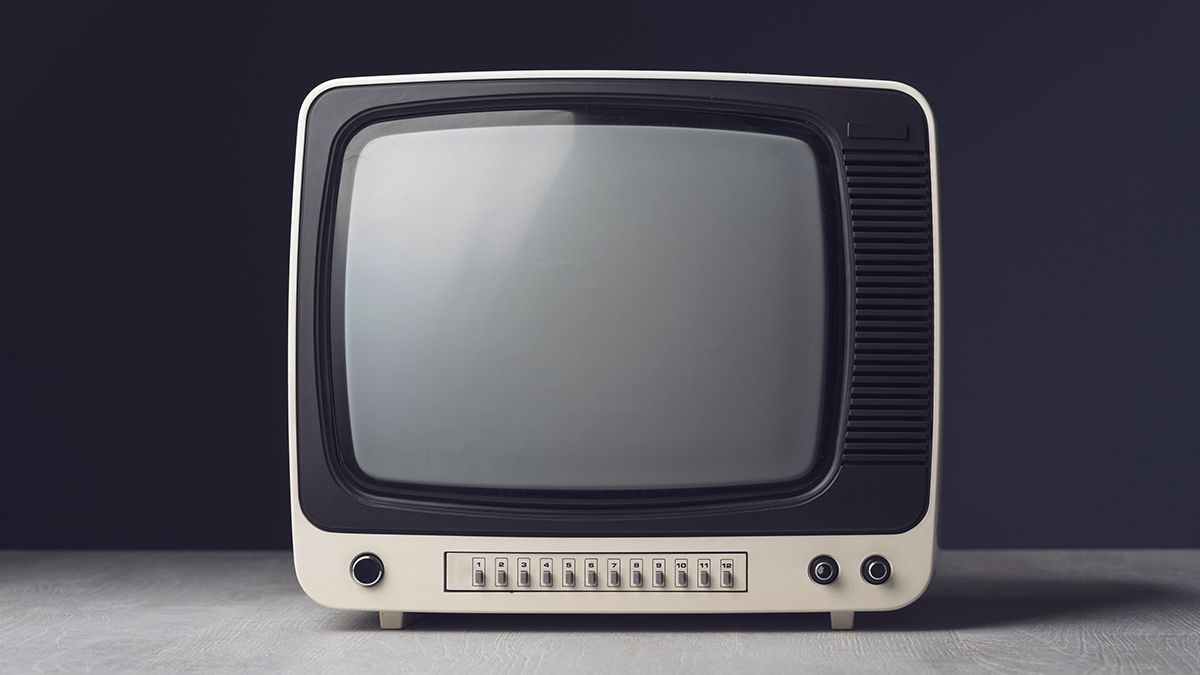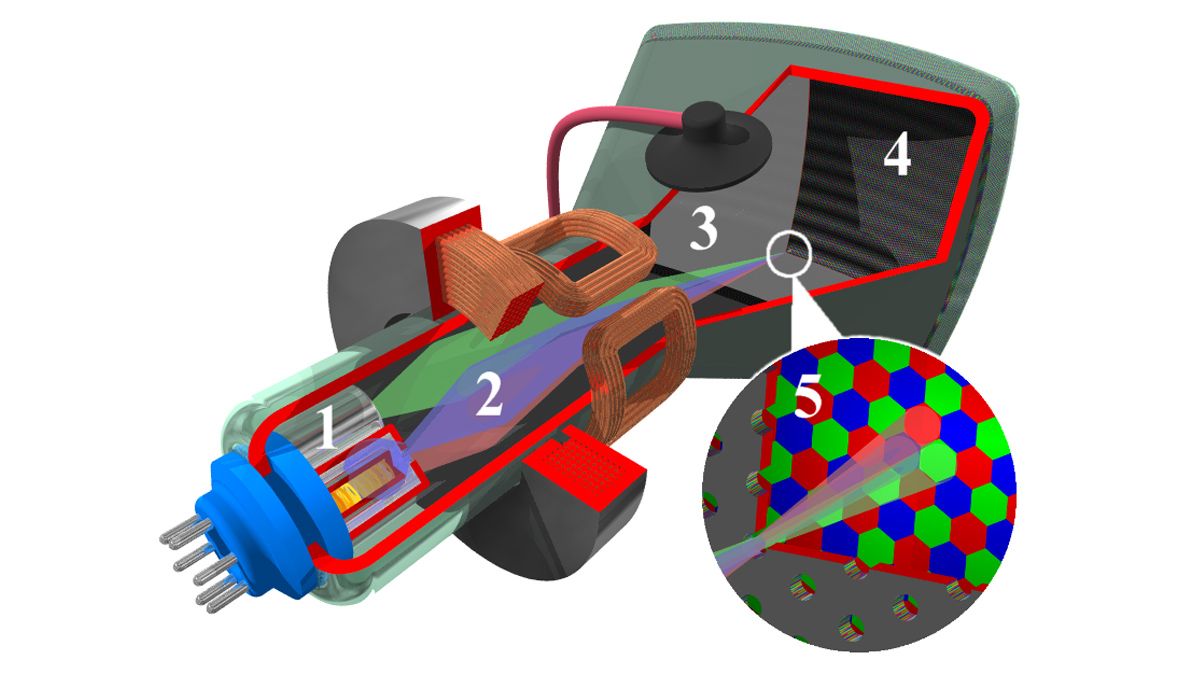Back in the day, your television set could generate enough static that it would raise your hair and even let you torment your siblings with comic-villain-like static zaps. But today, not so much. Where'd the static go?
Here's Why Old TVs Were So Staticky
To understand why old television sets had the power to make the hair lift right off your head if you leaned in close, turned your cat into a spikey-haired mess if they walked by and rubbed the screen, and granted you the power to zap people (or yourself) with a single touch, we need to dig into how those old CRT behemoths worked.
First, let's look at a cut-away diagram of the inside of a cathode ray tube (CRT) television to identify the key parts of good old-fashioned 20th-century television set.
First, we have a series of electron guns (1) that fire a stream of electrons (2) from the rear of the tube toward the beam mask (3) that separates the red, green, and blue elements of the picture. The beams pass through the super-fine mesh of the beam mask and hit the phosphor-coated inner side of the TV glass (4). The inset magnification (5) shows the beams hitting the phosphor layer and exciting the phosphor, which creates that iconic TV glow.
The entire process was very high energy. In fact, if you've ever heard somebody warn against opening up an old TV set because the shock could potentially stop your heart, they were giving you sound advice.
Old sets contain a transformer that outputs high-voltage electrical current to power the electron gun. That constant barrage of electrons against the metal screen behind the television's thick glass generates a positive static charge. Left alone, the static charge will slowly dissipate into the room, but if you bring anything with a negative charge (like your hand) close to the screen before that happens, the object will be attracted to the screen.
At fairly low levels, you'll feel the charge as a sort of static hum or pull, at higher levels, you might even hear it crackle a little as your hand moves over the screen, and if the static build-up is high enough, it'll "jump" off the screen, and "zap" you.
This is also why old televisions seemed to get so dusty all the time. Dust particles floating in the air anywhere near the television were drawn as if the screen was a vacuum cleaner, right to the glass.
Why New TVs Aren't So Staticky
It would be incorrect to say that newer flat-screen televisions have no static at all. All electronic devices in operation will generate a little bit of static.
But unlike the giant cathode-ray tube firing off a constant stream of electronics towards the glass in an old television, modern TVs are a much slimmer (and lower power) affair without so much electron slinging going on.
Instead of using a lot of energy to excite a phosphor layer coating a thick piece of glass, modern TVs instead use a much smaller amount of energy to signal individual tiny pixels in a very thin grid to turn on or off.
Exactly how that arrangement of pixels works and how the specific signaling is handled varies between flat-screen technologies. However, the general premise holds whether we're talking about an old flat-screen computer monitor or a shiny new OLED TV.
So although both an old CRT television and a new flat-screen television use electricity, the amount used in modern TVs is much lower and isn't used in such a fashion that it generates a significant electrostatic charge on the screen's surface.
You'll still get a little more dust on the body of your flat-screen TV than you would on a similar-sized but not electronic object placed in the same location, but most of that will be attracted to the plastic body of the TV and not the screen as would historically have been the case.
Not only does that save you on dusting, but you'll also save on power. Modern TVs, even living-room-dominating ones, have a much lower operational and phantom power load than older TVs. So you're saving time dusting, not getting zapped by the screen, and saving money on your electric bill while enjoying a much higher-resolution picture.



